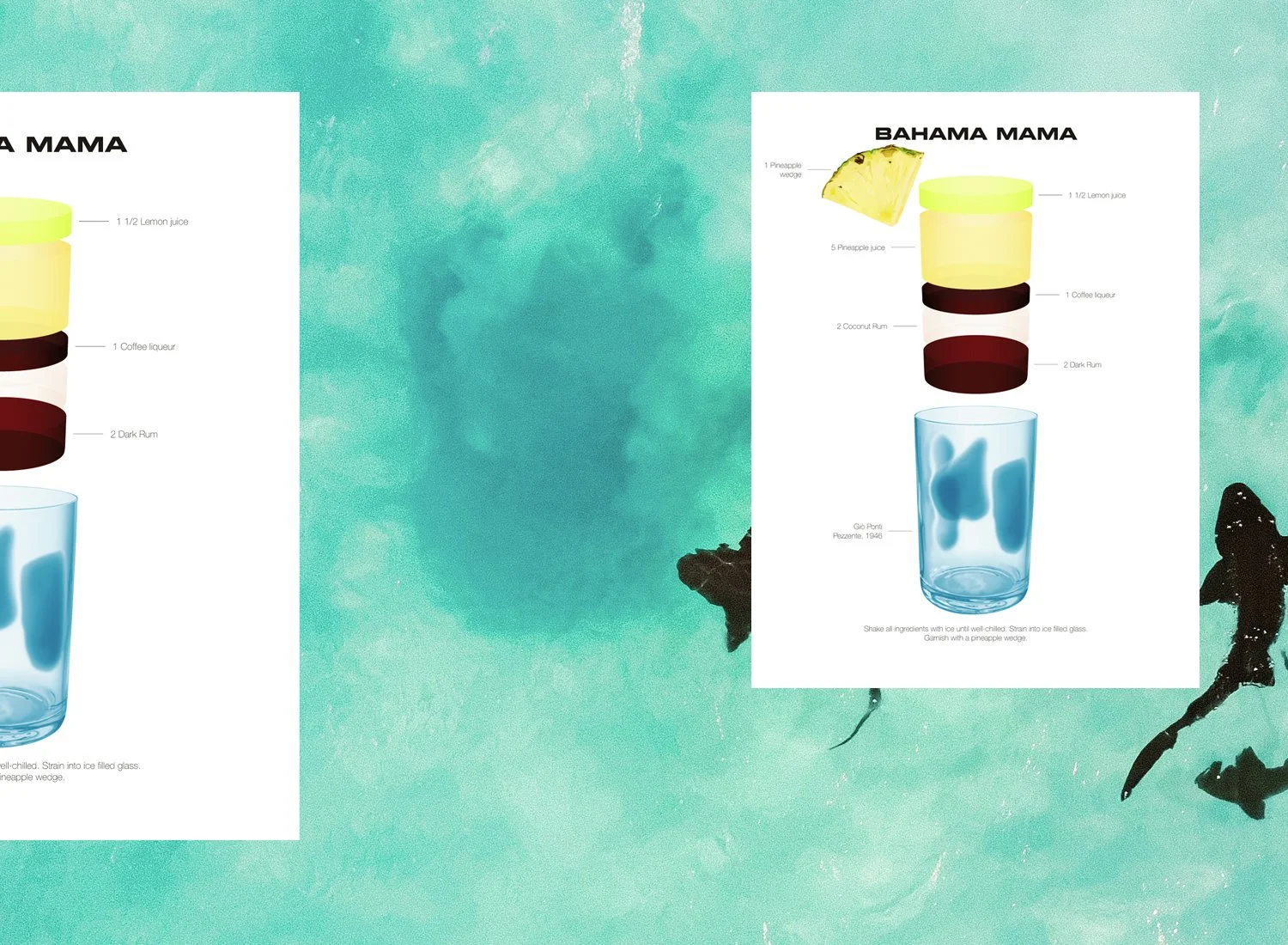Cocktail – Bahama Mama
Cocktail – Bahama Mama
During Prohibition in the United States, lasting from 1920 until 1933, the Bahamas became an important hub for smuggling Caribbean rum into the United States. Thanks to its convenient location, just 53 miles or 85 kilometers from Miami. This period could very well have been when the Bahama Mama was created, possibly to cater to the new crowd of American bootleggers, gangsters and tourists. The impact of the bootlegging and the American tourists completely changed the islands economy as well as its society. The smuggling lead to an influx of money and increased urbanization, and with that, investment in infrastructure, particularly in Nassau. For Bahamas this became the starting point of a lucrative tourism industry that is still the driving force of its economy today.
The first time Bahama Mama was referenced was in a song from 1932 called Bahama Mama: That Goombay Tune. The Goombay being a genre of up-tempo music with elements of calypso and rhythm and blues, typical to Bahamas. The same year Henry Hall, a popular band leader for the BBC Dance Orchestra, remade into a Foxtrot. It became so popular that calypso singer Dorothy “Dottie” Lee Anderson started using Bahama Mama as a stage name twenty years after the was first recorded. She also used the monikers “The Nassau Sizzler,” “The Calypso Hip Wiggler,” “The Tropical Heat Wave,” and “The Shake and Shimmy Jungle Queen,” but “Bahama Mama” was understandably the name that stuck. Dottie made a name for herself singing in the hottest Miami nightclubs during the 1950s, a decade when the drink started to appear on cocktail menus, maybe as a tribute to Dottie.
Finally, a name that often gets mentioned in regards to Bahama Mama is Oswald Greenslade. He was a Bahamian bartender at the Pink Elephant Nightclub in Nassau Beach Hotel and says he invented the Bahama Mama in his bar in 1963 for three tourists who asked for a unique, fruity cocktail. He didn’t name his drink straight away but when Maureen Duvalier, Bahamian calypso singer, entertainer and global ambassador for the Bahamas, came into the bar a short while later he decided to name it Bahama Mama since she also used the popular stage name.
There has been questions about Mr. Greenslade claims, saying that the drink was well established and featured on cocktail menus during the 1940s and 1950s, even though said menus seem to be hard to find. Whoever invented the Bahama Mama, Oswald Greenslade has clearly been instrumental in popularizing the drink.
THE DESIGNER
Giò Ponti was an Italian architect, industrial designer and furniture designer born in Milan in 1891. He got a degree in architecture from Politecnico di Milano in 1921. During his career he started the Domus and Stile magazines, built houses with flexible furniture, designed the Superleggera Chair, glass for Murano, built the Pirelli Tower in Milan and designed sets for La Scala, amongst other things. The Pezzente glass was designed by Ponti in 1946.
Product information
This is one in a series of illustrations of classic cocktail recipes with a selection of the most beautifully designed glasses.
The size 40x50 cm (approx 16x20”) are signed and printed on Hahnemühle Photo Rag Bright White 310g archival paper and are sold in a limited edition of 50 prints.
The size 30x40 cm (approx 12x16”) are printed on Hahnemühle Fine Art Studio Enhanced 210g archival paper.



